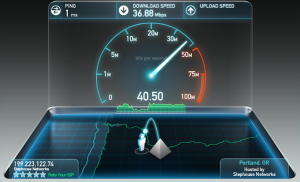Here’s a brief and informative look at what’s been going on with America’s Internet Service Providers (ISPs) and where things could be going. We have Edward Snowden’s revelation of NSA surveillance and the questionable snooping of our government on, well, everyone with an internet connection. We’re also chewing on the repercussions of the FCC’s Net Neutrality rulings. And now, two of America’s cable companies want to merge. It’s not surprising that there are plenty of questions being raised about how America’s ISP pricing could change and how these corporations will treat the internet traffic of their customers.
I hope this article can bring a little clarity and information to our communities.
Keep in mind that as of the publishing date of this article, none of these hypothetical ISP pricing scenarios are actually happening. I’m just going to address some extreme scenarios that I’ve seen people mention and try to bring some understanding to them.
The Pay-Per-Channel Scenario
According to research by the New America Foundation, America has one of the highest costs of broadband internet access. This lends much weight to the argument that many households aren’t happy with their high-speed internet bills since the main ISPs in the nation can basically charge whatever they feel like.
With recent FCC events, there’s a theory (and a fear) that larger companies will try and force pre-packaged internet plans onto their customers now that ISPs can now restrict and discriminate against web traffic.
Typically, common high-speed internet services (like cable and DSL) have been simple: choose a subscription plan that get’s the customer a pipe to the internet. The limiting factors are the speed in which the customer accesses the internet. Typically, if a customer wants a higher access speed, they’ll pay for a pricier plan.
Now that FCC rulings allow traffic descrimination, the future holds any number of interesting options for consumer grade internet packages. On the one hand some ISP’s (particularly ones that have regional monopolies) could choose to move toward a pay-per-channel-style of subscription method where the user pays to access premium parts of the internet, much like how cable television operates. For example, you may be able to pay for a basic internet package that includes common, basic sites like Google, Yahoo, MSN. However, in order to stream content from Youtube or Netflix, you would need to pay an additional streaming fee.

This is all purely speculation on my part, but it’s a possibility and would certainly explain why a larger corporation would want net neutrality done away with.
Even if larger ISPs and carriers start to discriminate and build a pay-per-channel approach to internet service, may see a drastic upswing in the amount of companies that choose to listen to their customer base and continue to offer full access to the internet. Transparency will become a means to disrupt that kind of market.
Major Content Providers Resist
Netflix recently released a warning to ISP’s stating that if they detect any throttling of their customer’s traffic they will not hesitate to take extreme measures and rally their customer base against any such ISP. They made this statement in their most recent letter to their investors.
Netflix mentioned that they don’t believe that traffic throttling will be too much of an issue considering what a backhanded and dishonest thing it would be to do to a customer base. Along with their mission to directly peer with as many networks (like Stephouse!) as they can to improve the customer experience, it’s great to know that a major content provider has no plans of tampering with content delivery.
Consumers Taking Action
Other than general awareness of how the internet service industry continues to change, consumers can do a bit of due diligence about how high-speed internet service providers work and what their plans entail to really understand what they can purchase. There are high-speed internet service providers, like Stephouse Networks, who have no plans to throttle or discriminate against any of streaming traffic. We will stay net neutral and fight for your right to free, unbiased web usage.
Taking the time to learn about how high-speed internet services work and what kind of plan actually fits your household or office can help consumers find a plan that actually fits, rather than purchasing something that they will underutilized. You enjoy paying for exactly how much water, gas, or electricity your household actually uses, right? You can do the same with your high-speed internet plan with the right research.
As for pricing and service changes from larger ISPs, time will tell. However, consumers who take the time to research their options won’t have to deal with oppressive, pay-per-channel pricing if this model comes to pass.



